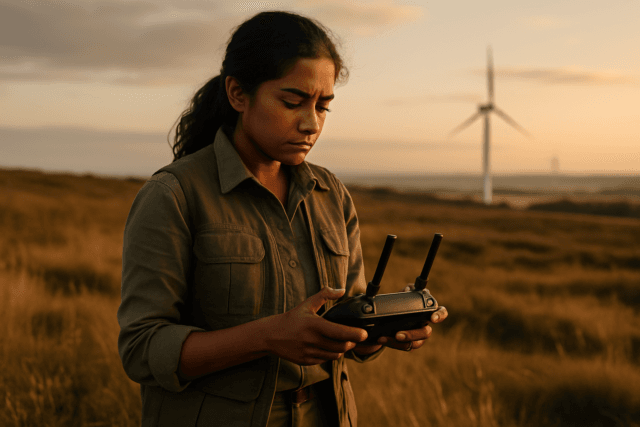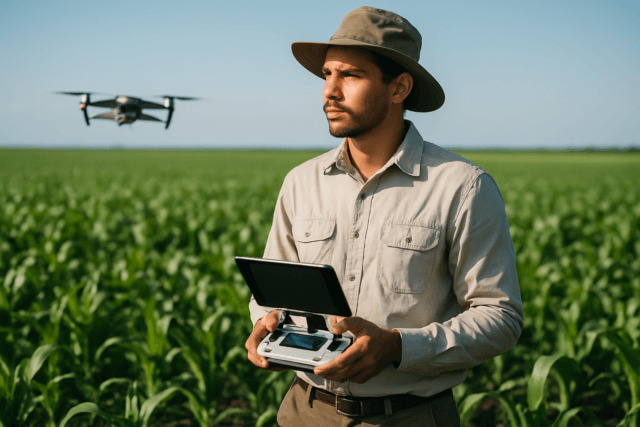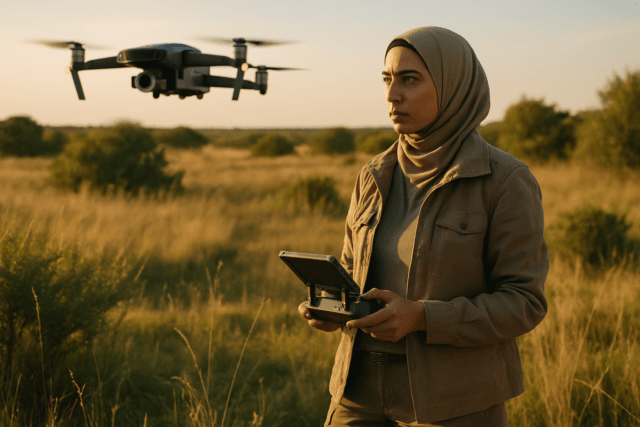The integration of Unmanned Aerial Systems (UAS), commonly known as drones, has fundamentally transformed the fields of surveying and mapping. Moving beyond traditional, often labour-intensive methods, drones offer an unparalleled combination of speed, accuracy, safety, and cost-effectiveness, enabling the creation of highly detailed 2D and 3D geospatial data. This technological shift is not merely an enhancement but a paradigm change, opening new possibilities across various industries.
The Genesis of Drone Surveying
Traditionally, surveying involved ground-based equipment like total stations and GPS receivers, or more costly manned aircraft for aerial perspectives. These methods, while effective, were often time-consuming, required significant human intervention, and could be limited by hazardous terrain or large areas. The advent of drones, equipped with advanced cameras, sensors, and GPS systems, addressed these limitations directly. By capturing aerial data with downward-facing sensors, drones can generate high-resolution orthomosaics and detailed 3D models of areas where data was previously low-quality, outdated, or nonexistent.
Core Technologies: Photogrammetry and LiDAR
The two primary data acquisition technologies employed by drones for surveying and mapping are photogrammetry and Light Detection and Ranging (LiDAR).
Photogrammetry
Drone photogrammetry involves capturing multiple overlapping high-resolution images of the ground from different vantage points. Specialised software then processes these images, identifying common points (tie points) to create geo-referenced orthomosaics, digital surface models (DSMs), and detailed 3D models. This method excels at producing visually rich, true-colour 3D models and is generally more cost-effective as it uses less expensive visual cameras. Drones like the DJI Mavic 3 Enterprise and DJI Phantom 4 RTK are popular choices for photogrammetry due to their high-resolution sensors and mechanical shutters, which are crucial for accuracy.
LiDAR
LiDAR technology, on the other hand, uses laser pulses to measure distances and create high-resolution 3D maps. A LiDAR sensor on a drone shoots thousands of laser beams per second, and by capturing the return pulses, it builds a precise point cloud of the terrain and structures below. A significant advantage of LiDAR is its ability to penetrate through vegetation, capturing the shape of the underlying ground, and it can even operate in low-light conditions or darkness. LiDAR data typically requires less processing than photogrammetry and is ideal for creating highly accurate digital elevation models (DEMs). Drones such as the DJI Matrice 350 RTK, often paired with LiDAR payloads like the Zenmuse L1 or L2, are widely used for precision LiDAR mapping.
Key Advantages of Drone Surveying
The shift to drone-based surveying and mapping offers several compelling benefits over traditional methods:
Enhanced Safety
One of the most critical advantages is the significantly improved safety for survey personnel. Drones can access remote, hazardous, or difficult-to-reach areas such as steep slopes, active roadways, construction sites, unstable landslide zones, or areas affected by natural disasters, eliminating the need for human presence in dangerous environments. This reduces the risk of accidents and injuries.
Increased Efficiency and Speed
Drones can rapidly cover large areas and collect data much more quickly than conventional ground-based methods. A drone survey can be up to five times faster than traditional land-based methods, greatly reducing field time. This efficiency leads to faster project completion, quicker decision-making, and timely monitoring of changes in the surveyed area.
Cost-Effectiveness
While there might be an initial investment, drones significantly reduce overall project costs. They minimise the need for extensive manual labour, expensive equipment setups, and additional personnel. Operating costs are substantially lower compared to manned aircraft, sometimes up to 10 times less expensive. Reduced travel expenses, time on-site, and the elimination of costly safety measures like scaffolding also contribute to significant savings.
Superior Accuracy and Data Quality
Drones equipped with advanced sensors and GPS technology (like RTK/PPK) can capture highly precise data, often achieving centimeter-level accuracy. The resulting 2D maps and 3D models are more accurate and detailed than those obtained through traditional means. This high-resolution data provides a comprehensive representation of the surveyed area, allowing for more informed decision-making.
Versatility and Accessibility
Drones can be deployed in diverse terrains and conditions, from rugged landscapes to large-scale construction sites, and even for shallow water mapping. Their ability to fly at lower altitudes than satellites also ensures high-resolution, high-precision images that are less dependent on unpredictable atmospheric conditions like cloud cover.
Applications Across Industries
The capabilities of drone surveying and mapping extend across a multitude of sectors:
Land Surveying and Cadastral Mapping
Drones generate high-resolution orthomosaics and detailed 3D models for accurate cadastral maps, land management, and urban planning. They accelerate topographic surveys for site scouting, allotment planning, and design, enabling the rapid production of high-accuracy maps even in complex environments.
Construction and Infrastructure
In construction, drones are vital for site planning, progress monitoring, and earthwork calculations. They provide aerial imagery for visualising site conditions, tracking changes over time, and monitoring progress against project timelines and budgets. Drones also facilitate precise volumetric measurements of stockpiles, crucial for inventory and monitoring in mining and construction. For infrastructure inspection, drones assess conditions of bridges, roads, power lines, and dams, identifying issues like cracks or corrosion without putting human inspectors at risk.
Environmental Monitoring and Conservation
Drones are transforming environmental monitoring by collecting high-resolution data in remote or inaccessible areas. They are used for vegetation monitoring (assessing health, canopy cover, identifying disease), plant and animal counting, species identification, and tracking land-use changes, deforestation, and habitat degradation. Drones also assist in water quality monitoring, pollution identification, and early detection and assessment of natural disasters like wildfires and hurricanes.
Mining and Quarries
For mining operations, LiDAR-equipped drones are used to inspect mines after detonations, measure ore volumes, and monitor ore extraction spaces. They provide a safer and more efficient method for stockpile measurement and overall site management.
Data Processing and Software
The raw data collected by drones—images or point clouds—requires specialised software for processing and analysis. Photogrammetry software like Pix4D, DroneDeploy, Agisoft Metashape, and Bentley’s ContextCapture stitch images together to create maps and 3D models. For LiDAR data, dedicated software is used to process the dense point clouds into usable 3D models, digital elevation models, and contour lines. Many platforms offer cloud-based solutions, enabling seamless data flow and collaboration among stakeholders. Compatibility with CAD (Computer-Aided Design) and BIM (Building Information Modeling) software is also crucial for integration into engineering and design workflows.
Challenges and Future Outlook
Despite the numerous advantages, drone surveying faces some challenges. Adverse weather conditions (strong winds, heavy rain) can hinder operations and affect data quality. Limited battery life can restrict flight time and coverage for very large areas, though advancements are continually improving endurance. Regulatory restrictions also play a role, with drone pilots often needing to work under the supervision of licensed surveyors in many regions. Data security and privacy issues also require careful consideration.
Looking ahead, the future of drone applications in surveying and mapping is poised for further innovation. Continuous advancements in sensor technology, improved flight autonomy, and the integration of artificial intelligence and machine learning will further refine surveying capabilities. Expect to see smarter, quicker, and more potent systems capable of capturing even more data in less time. Beyond Visual Line of Sight (BVLOS) operations will enable drones to cover larger areas, while the integration of 5G technology will speed up data transfer for real-time monitoring and analysis. These innovations will lead to even more precise mapping and urban planning, driving new standards of efficiency and accuracy across all sectors.





